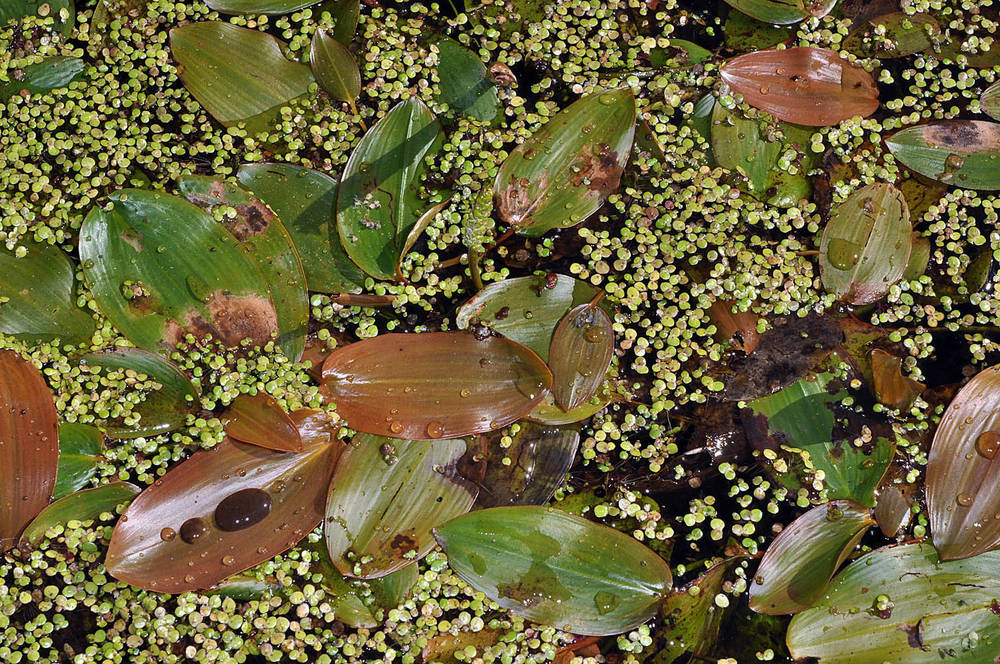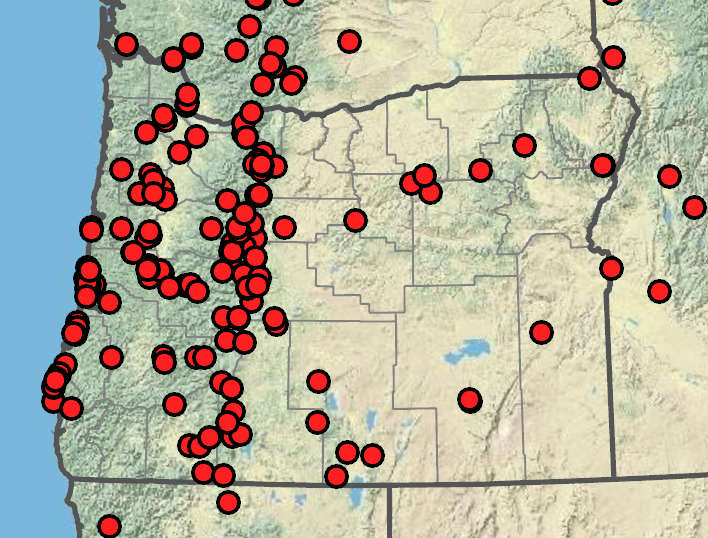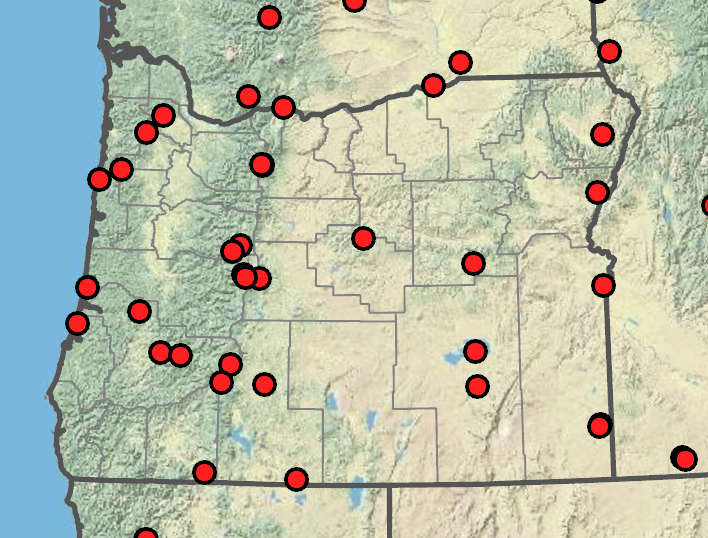Potamogeton natans
Potamogeton berchtoldii
floating-leaf pondweed
Berchtold's pondweed
terete, 30–90 cm; nodal glands absent.
terete to slightly compressed, 18– 150 cm; nodal glands present on at least some nodes; to 0.5 mm diameter, green; gold, brown, or rarely white.
submersed and floating.
submersed, attached to stem nodes, not attached to stipules;
stipules convolute, 3.1–9.2 mm, rarely fibrous;
tip acute to obtuse;
blades linear, 9–54 × 0.2–2.5 mm;
base slightly tapering;
margins entire;
tip subulate to obtuse; lacunae in 1–5 rows on each side of midrib;
veins 1–3(5).
elliptic to ovate, 35–110 × 15–60 mm;
base rounded to cordate;
tip acute to rounded;
veins 17–37;
petioles 55–290 mm.
sessile, attached to stem nodes, not attached to stipules;
stipules 45–100 mm; whitish, fibrous;
tip obtuse;
blades rigid, linear, subterete, 9–20 cm × 0.7–2.5 mm;
base slightly tapering;
margins entire;
tip obtuse;
veins 3–5, obscure.
emersed;
spikes cylindric, 25–50 mm;
peduncles terminal; erect to ascending, 45–95 mm.
submersed or emersed;
spikes capitate to cylindric, continuous to interrupted, 1.5–10.1 mm;
peduncles more than 3 per plant; axillary or terminal, cylindric to slightly clavate; erect, rarely recurved, 5–66 mm.
sessile, obovoid; turgid, 3.5–5 × 2–3 mm, green to greenish brown, not keeled;
beaks erect to apically recurved, 0.4–0.8 mm.
sessile; ovoid;
sides rounded, rarely concave, 1.5–2.2 × 1.2–1.6 mm, green to brown, not keeled;
beaks erect, located at middle of fruit tip, 0.1–0.6 mm.
Potamogeton natans
Potamogeton berchtoldii
Ponds, lakes, and slow-moving streams. 0–2000 m. BR, BW, Casc, CR, ECas, Est, WV. CA, ID, NV, WA; north to Northwest Territories, east to Newfoundland, southeast to NM; Eurasia. Native.
Potamogeton natans is a common pondweed of still or slow moving water. Its leathery floating leaves are often cordate at the base. Its petioles have reflexed tips with a light-colored band that contrasts with darker tissue below. Its submersed leaves are rigid and subterete. This species hybridizes with P. nodosus.
Shallow waters of lakes and streams. 0–1700 m. BR, BW, Casc, ECas, Est. CA, ID, NV, WA; north to Northwest Territories, east to Newfoundland, southeast to FL; Eurasia. Native.
This pondweed is sometimes treated as a subspecies of P. pusillus (P. p. ssp. tenuissimus). Immature plants usually cannot be distinguished from P. foliosus or P. pusillus.
Nick Otting, Richard Brainerd, Barbara Wilson
Nick Otting, Richard Brainerd, Barbara Wilson
- Local floras:
BC,
CA,
OR,
WA
- Local Web sites:
CalFlora,
CalPhotos,
Flora NW,
PNW Herbaria
WildflowerSearch
iNaturalist (observations)
USDA Plants Database
- LBJ Wildflower Center
- SEINet
- Plants of the World Online
- Encyclopedia of Life
- Wikipedia
- Google Image Search
- Local floras:
BC,
CA,
OR,
WA
- Local Web sites:
CalFlora,
CalPhotos,
Flora NW,
PNW Herbaria
WildflowerSearch
iNaturalist (observations)
USDA Plants Database
- LBJ Wildflower Center
- SEINet
- Plants of the World Online
- Encyclopedia of Life
- Wikipedia
- Google Image Search




